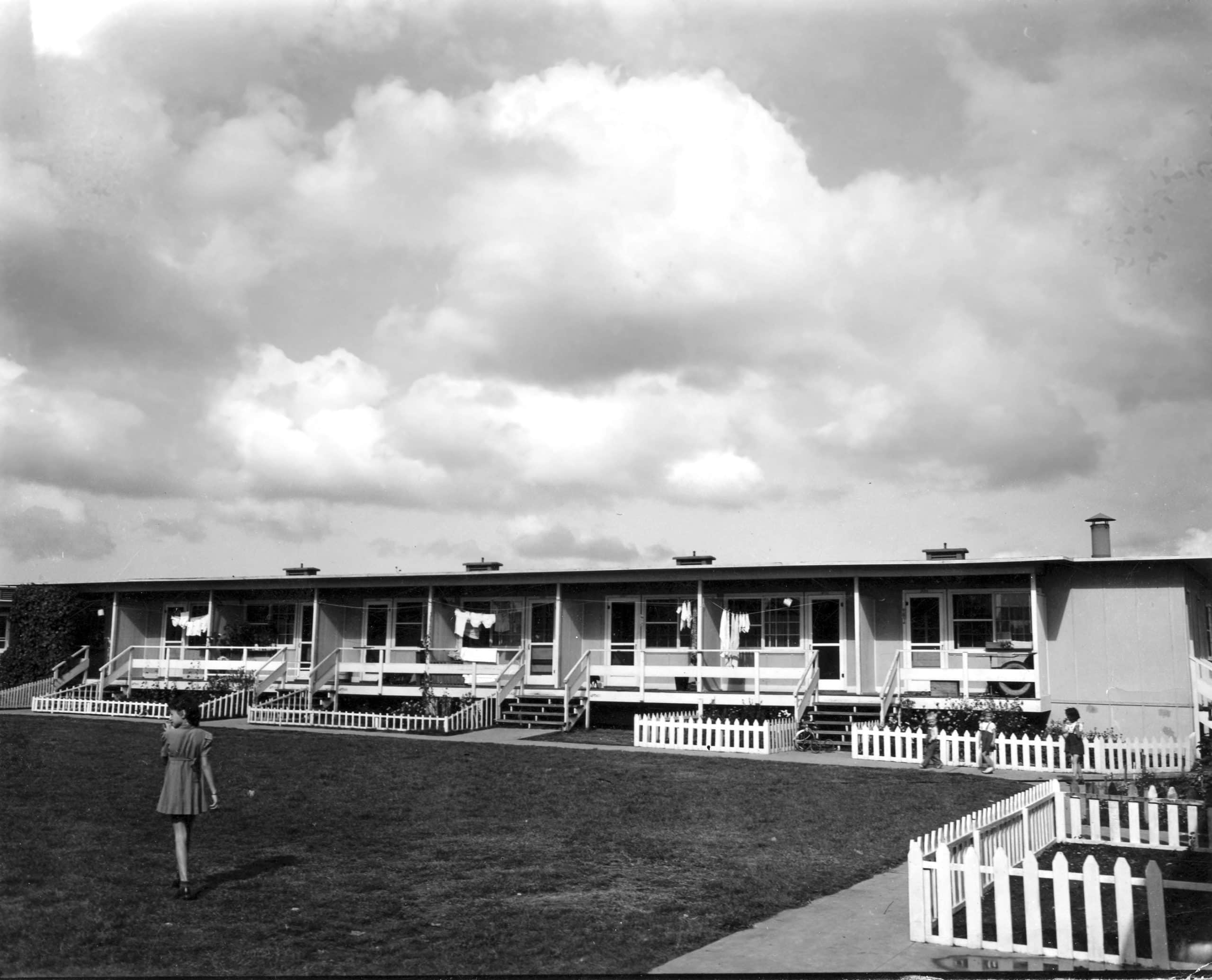From the time of the Tongva, the land we call San Pedro has had a symbiotic relationship with its waterline, the cause and effect getting more dramatic as the port began to take shape. The creation of the federal breakwater in the early 20th century was an absolute game-changer because it allowed for all types of industry to take root. Industry brought jobs that attracted people. Good jobs that allowed people to make San Pedro their home for generations. Here’s a look at just how much the port impacted San Pedro’s residential development.
A century ago, the Port of Los Angeles had a huge growth spurt. The Main Channel was lined with piles of lumber from the Pacific Northwest, lumber that would build Los Angeles into the metropolis it would become. But the shipbuilding industry, spurred by the United States’ entry into World War I, would have a much stronger impact on the growth of San Pedro.
The first major shipbuilding companies in the port included Ralph J. Chandler Shipbuilding Corporation, Southwestern Shipbuilding Company, and the Los Angeles Shipbuilding and Drydock Corporation. The emergency need for ships in the war effort had war workers flocking to San Pedro for a good job. The only problem is that San Pedro didn’t have anywhere for these men to live.
In March of 1918, Harbor Department Traffic Manager Clarence Matson issued a statement saying that the lack of housing was holding back additional shipbuilding plants at the port and that “apartments and houses were needed by the hundreds.” Congress had recently passed a $50 million ship workers housing bill, but none of those funds would find their way to San Pedro. This left the job to private citizens and firms to make up the shortfall and start building.
Immediately, the Harbor Housing Corporation was created, and they started taking out ads all over Los Angeles to promote the building of a workmen’s hotel and to attract similar “forward-looking men” to join the building effort. Another way that San Pedro answered the call for more housing was through the construction of bungalow courts and boarding houses. If the pressure to keep up with housing shipbuilders wasn’t enough, San Pedro would soon have another type of ship worker to add to the load — the sailor.
After the war, Admiral Rodman and other Navy officials were seriously looking at moving the Pacific Fleet to San Pedro. The business community answered the call by pushing for at least 1,000 housing units, including bungalow courts and five- to six-room bungalow homes, the remnants of which can still be found all over San Pedro.
The 1920s building boom in San Pedro created by the housing shortage was slowed a little by the stock market crash and the Great Depression of the 1930s. In 1937, the United States Housing Act was passed, creating the United States Housing Authority, an organization with the authority to make loans to public housing agencies. The Housing Authority of the City of Los Angeles (HACLA) was created the following year. Several developments of modern garden-style apartments for those with low income were planned to replace blighted slum housing all around Los Angeles. The building of this public housing was already well underway when Pearl Harbor was attacked in 1941, essentially entering the United States into World War II.
A second, much larger wave of job seekers heading to the West Coast to help in the war effort would need housing that would “bring the worker to the job, keep him on the job and maintain his efficiency and morale.” The low-income garden apartments were then used to house these war workers. Because of San Pedro’s proximity to the port, a few temporary defense housing developments were built during the war years, including Rancho San Pedro, Banning Homes, Western Terrace, and the Richard Neutra-designed Channel Heights. After the war, it took a few years before Rancho San Pedro was given over to its intended use as low-income housing. At the same time, the other developments became rental units or were demolished for neighborhoods of single-family homes.
When you look around San Pedro, you can see the reactive building that followed eras in our history, like developmental strata. We didn’t have the luxury of being a planned community. A hundred years later, and we’re now growing upwards, adding hundreds of units in tall buildings. But this time, development isn’t being dictated by what’s going on in the port because the threat of automation is looming over it like a dark cloud. This time, developers are prospecting on our shores, hoping that people will want to live along “L.A.’s last affordable waterfront.” A waterfront that was never good enough before because it was a working waterfront. spt







Comments